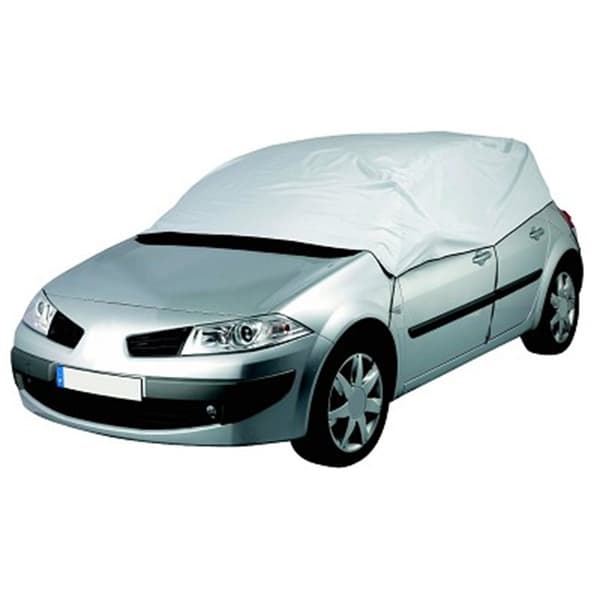Difficult traffic conditions for many French motorists this Thursday with the return of snowfall. Just review the tips for riding in these winter conditions and equip yourself well. But what can you do to anticipate a departure by preparing your vehicle the day before departure?
Full of fuel or battery, tires and windshield washer.
In fact, the idea is still to prepare your vehicle as best as possible to facilitate your departure: enough to save yourself painful tasks that you will be happy to do without in the cold and dark when leaving home.
Ideally, you can check the tire pressure this way. In winter, 0.2 bars can be added to the recommended pressure, to compensate for the loss linked to lower temperatures.
Also remember to refuel, this will save you this step to a service station on your route the next day. One less detour and therefore less risk of getting stuck.
We can also think about a windshield washer fluid that is resistant to low temperatures, which in addition to not freezing, will also be much more effective when cleaning the windshield in these conditions.
If you drive electric, also remember to charge fully or at the maximum recommended levels, which depends on your battery type. In an LFP (lithium iron phosphate) battery, for example, which reacts worse to cold, it is not recommended to charge it to 100%. This is not the case with NMC (nickel manganese cobalt) batteries, which are more resistant to low temperatures, but it is not advisable to charge them periodically to the maximum, only before taking a long trip.
And for the 12 volt battery, which also doesn’t like the cold, you can place a simple piece of cardboard in front of the grille, this will prevent some of the very cold air from entering under the hood, thus preserving this fragile little one. battery. If you haven’t ridden for a few weeks, you can check its tension the day before, with enough time to have time to react: buy a new one or take a trip to restore its vigor if it approaches the critical threshold. Valuable information about this voltage to be monitored can be found on this site, Mr. Battery.
Protect your windshield, wipers and doors
If you want to avoid the step of defrosting your windshield, it can also be helpful to protect it. If cardboard can help at the last minute, this technique is not highly recommended: cardboard can get wet overnight and stick to the windshield the next morning. Which makes the defrosting operation even more painful, since in addition to the ice you have to deal with the decomposing cardboard. Therefore, a cloth cover would be a more appropriate emergency solution.
There are also special protective covers for the windshields, or even for all the windows of the vehicle, or just for the rear-view mirrors, which can be found in specialized stores (Point S, Norauto, etc.) and in large retailers.

If you leave the windshield unprotected, you can at least turn up the wipers the day before, which will prevent them from getting stuck in frost. Also, remember to wait for the ice to melt or check them manually before leaving. Operating frozen windshield wipers can damage the motor that powers them.
To make it easier to open the doors, “get a silicone spray to spray the door seals,” Renault also advises.
“If your car is not equipped with remote central locking, spray a few drops of penetrating oil/lubricant on the lock cylinders to prevent them from freezing,” the manufacturer also recommends.
Ventilation in good working order.
Good vehicle ventilation will also be essential during your trip the next day. Changing the cabin filter will allow more effective demisting.
The temperature difference between indoor and outdoor air favors fogging: be sure to maintain at least one ventilation network, always in the open position and not in air recycling, while taking advantage of the dry conditioned air. In fact, the idea is still to evacuate humidity, which can also be helped by opening a window slightly.
Also have a microfiber cloth or sponge on hand so you can quickly regain visibility inside your car and in the mirrors.
Prepared equipment in the trunk and in the passenger compartment
If you are not equipped with winter or four-season tires, you can purchase removable equipment, chains or socks. And therefore have them in the trunk the day before departure. And also think about some gloves and a mat or a simple cardboard to place on the ground in front of the tires that will give you a little more comfort during this somewhat delicate operation, especially on the side of the road and in the cold.
The same goes for the accessories in the cabin: the plastic scraper and/or a de-icing product for example. Also the yellow vest, mandatory regardless of the weather conditions as a reminder, but which can be very useful in case the vehicle becomes immobilized.
Why not carry a “survival kit” in case of any problem? You can put something to snack on, water, even a thermos of hot drink or even a blanket. In short, everything that will allow you to wait with more peace of mind.
Source: BFM TV


